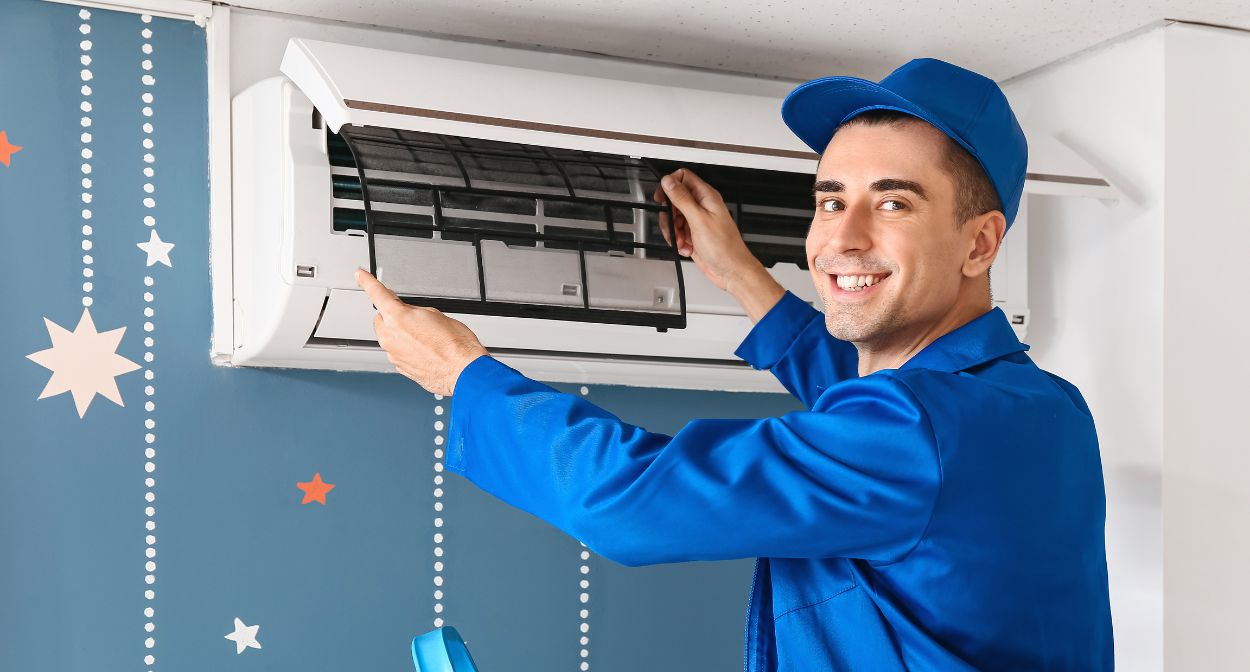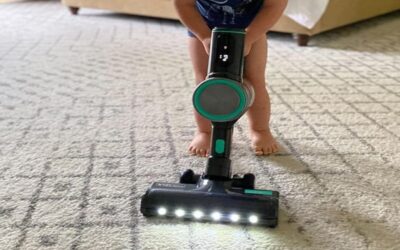With the scorching heat of summer and the need for efficient cooling solutions, ductless mini-split air conditioning systems have become increasingly popular. Offering flexibility, energy efficiency, and easy installation, these systems have revolutionized the way we cool our homes and businesses. In this article, we will delve into the world of ductless mini-split AC systems, exploring how they work, their advantages, the installation process, maintenance tips, troubleshooting common issues, and more.
What Are Ductless Mini-Split Air Conditioning Systems?
Ductless mini-split air conditioning systems, also known as ductless AC or mini-split AC systems, are compact cooling and heating units that provide zoned comfort without the need for ductwork. Unlike traditional central air conditioning systems, which rely on a network of ducts to distribute conditioned air throughout a building, ductless mini-split systems consist of an indoor unit and an outdoor unit connected by refrigerant lines.
How Do Ductless Mini-Split AC Systems Work?
Ductless mini-split AC systems operate on the principle of refrigeration. The outdoor unit contains a compressor and a condenser, while the indoor unit houses an evaporator and a fan. When the system is turned on, the compressor in the outdoor unit circulates refrigerant, which absorbs heat from the indoor air and transfers it outside. The cooled refrigerant then returns to the indoor unit, where it releases the captured heat and blows cool air into the room.

Advantages of Ductless Mini-Split AC Systems
Energy Efficiency
One of the significant advantages of ductless mini-split AC systems is their energy efficiency. Traditional central AC systems often suffer from energy losses due to ductwork leaks and inefficient distribution. Ductless systems eliminate these issues, providing precise cooling to individual zones without wasting energy on unused areas.
Zoned Cooling
Ductless mini-split AC systems offer zoned cooling, allowing you to set different temperatures for different areas or rooms. This feature enables personalized comfort and helps reduce energy consumption by cooling only the occupied spaces.
Easy Installation
Installing a ductless mini-split AC system is relatively easy compared to traditional systems. It requires minimal disruption to your home or business as there’s no need for extensive ductwork installation. The indoor and outdoor units are connected by a small hole in the wall, making it a versatile and convenient cooling solution.
Improved Indoor Air Quality
Ductless mini-split AC systems come equipped with advanced filtration systems that help improve indoor air quality. These filters trap dust, pollen, allergens, and other airborne particles, ensuring cleaner and healthier air for you and your family.
Flexibility in Placement
Ductless mini-split AC systems offer flexibility in unit placement. The indoor units can be mounted on walls, suspended from ceilings, or installed as floor-standing units, depending on your preferences and the layout of the room. This versatility allows for efficient and unobtrusive cooling in any space.

Choosing the Right Ductless Mini-Split AC System
When selecting a ductless mini-split AC system, several factors should be considered to ensure optimal performance and efficiency.
Determine Cooling Needs
First and foremost, assess your cooling needs. Consider the size of the space you want to cool, the number of rooms or zones you wish to cool independently, and any specific requirements you may have.
Consider Energy Efficiency Ratings
Energy efficiency is a crucial aspect when choosing any cooling system. Look for units with high SEER (Seasonal Energy Efficiency Ratio) ratings, as they indicate better energy performance and cost savings in the long run.
Size and Capacity
Select a ductless mini-split AC system with the appropriate size and capacity for your space. Undersized units may struggle to cool adequately, while oversized units can result in short cycling and inefficiency.
Additional Features and Functions
Explore the available features and functions offered by different models. Some units come with advanced features like Wi-Fi connectivity, smart thermostats, sleep mode, and programmable timers, enhancing convenience and energy management.

Installation Process of Ductless Mini-Split AC Systems
Installing a ductless mini-split AC system typically involves the following steps:
Indoor Unit Placement
The indoor unit should be strategically placed to ensure optimal airflow and cooling. Consider factors such as furniture arrangement, room layout, and the location of electrical and refrigerant lines.
Outdoor Unit Placement
The outdoor unit should be installed in a well-ventilated area, away from direct sunlight and obstructions. Adequate clearance around the unit should be maintained for efficient operation and ease of maintenance.
Refrigerant Lines and Wiring
Connect the indoor and outdoor units using refrigerant lines and electrical wiring. These lines should be properly insulated and protected to prevent energy losses and damage.
Final Steps
Once the units are connected, test the system to ensure it’s functioning correctly. Adjust the settings and configurations as per your cooling requirements, and make sure all components are securely installed.

Maintenance and Care for Ductless Mini-Split AC Systems
Proper maintenance is essential for the longevity and efficiency of ductless mini-split AC systems. Here are some maintenance tips:
Cleaning the Filters
Regularly clean or replace the filters to ensure optimum airflow and prevent the accumulation of dirt and debris. Clogged filters can restrict airflow and reduce cooling performance.
Checking for Air Leaks
Inspect the connections between the indoor and outdoor units for any air leaks. Sealing any gaps or leaks with appropriate materials will improve the system’s efficiency and cooling performance.
Regular Inspections and Tune-ups
Schedule regular inspections and tune-ups with a professional HVAC technician to ensure that all components are functioning correctly. They can identify and address any potential issues before they escalate into major problems.
Professional Servicing
Consider professional servicing at least once a year to perform a thorough system check-up, clean the internal components, and conduct any necessary repairs or maintenance tasks. Professional servicing helps optimize the performance and lifespan of your ductless mini-split AC system.

Troubleshooting Common Issues with Ductless Mini-Split AC Systems
Like any cooling system, ductless mini-split AC systems may encounter common issues that can be resolved with troubleshooting. Here are a few examples:
No Cooling or Heating
If your system is not cooling or heating properly, check the thermostat settings, ensure the power is on, and verify that the air filters are clean. If the issue persists, contact a professional for assistance.
Uneven Cooling or Heating
Uneven cooling or heating may indicate a problem with airflow or system balance. Check the airflow direction and clean any obstructions around the indoor unit. If the issue persists, consult an HVAC technician.
Strange Noises
Unusual noises, such as rattling, buzzing, or grinding sounds, may indicate a loose or damaged component. Turn off the system and contact a professional to diagnose and resolve the issue.
Leaking Water
Water leaks can be caused by clogged condensate drains or improper installation. Clear any blockages in the drain lines and ensure they are sloped correctly for proper drainage. If the problem persists, seek professional help.
Remote Control Problems
If the remote control is not working, replace the batteries and ensure there are no obstructions between the remote and the indoor unit. If the issue persists, consult the manufacturer’s guidelines or contact customer support.
Conclusion
Ductless mini-split air conditioning systems offer a flexible, energy-efficient, and convenient cooling solution for homes and businesses. With their zoned cooling capabilities, easy installation, and improved indoor air quality, these systems provide optimal comfort while reducing energy consumption. By following proper maintenance and troubleshooting common issues, you can ensure the long-term performance and efficiency of your ductless mini-split AC system.
FAQs
1. Can a ductless mini-split AC system be used for both cooling and heating?
Yes, ductless mini-split AC systems can provide both cooling and heating functions, making them suitable for year-round comfort.
2. Are ductless mini-split AC systems more energy-efficient than traditional AC systems?
Yes, ductless mini-split AC systems are typically more energy-efficient than traditional AC systems, thanks to their zoned cooling and absence of ductwork.
3. Can I install a ductless mini-split AC system by myself?
While it’s possible to install a ductless mini-split AC system as a DIY project, it’s recommended to seek professional installation to ensure proper placement, connections, and optimal performance.
4. How often should I clean the filters of my ductless mini-split AC system?
It’s advisable to clean or replace the filters of your ductless mini-split AC system every one to three months, depending on the usage and air quality in your environment.
5. Is professional servicing necessary for ductless mini-split AC systems?
Professional servicing once a year is highly recommended to maintain the efficiency and performance of your ductless mini-split AC system, as well as to address any potential issues before they worsen.




